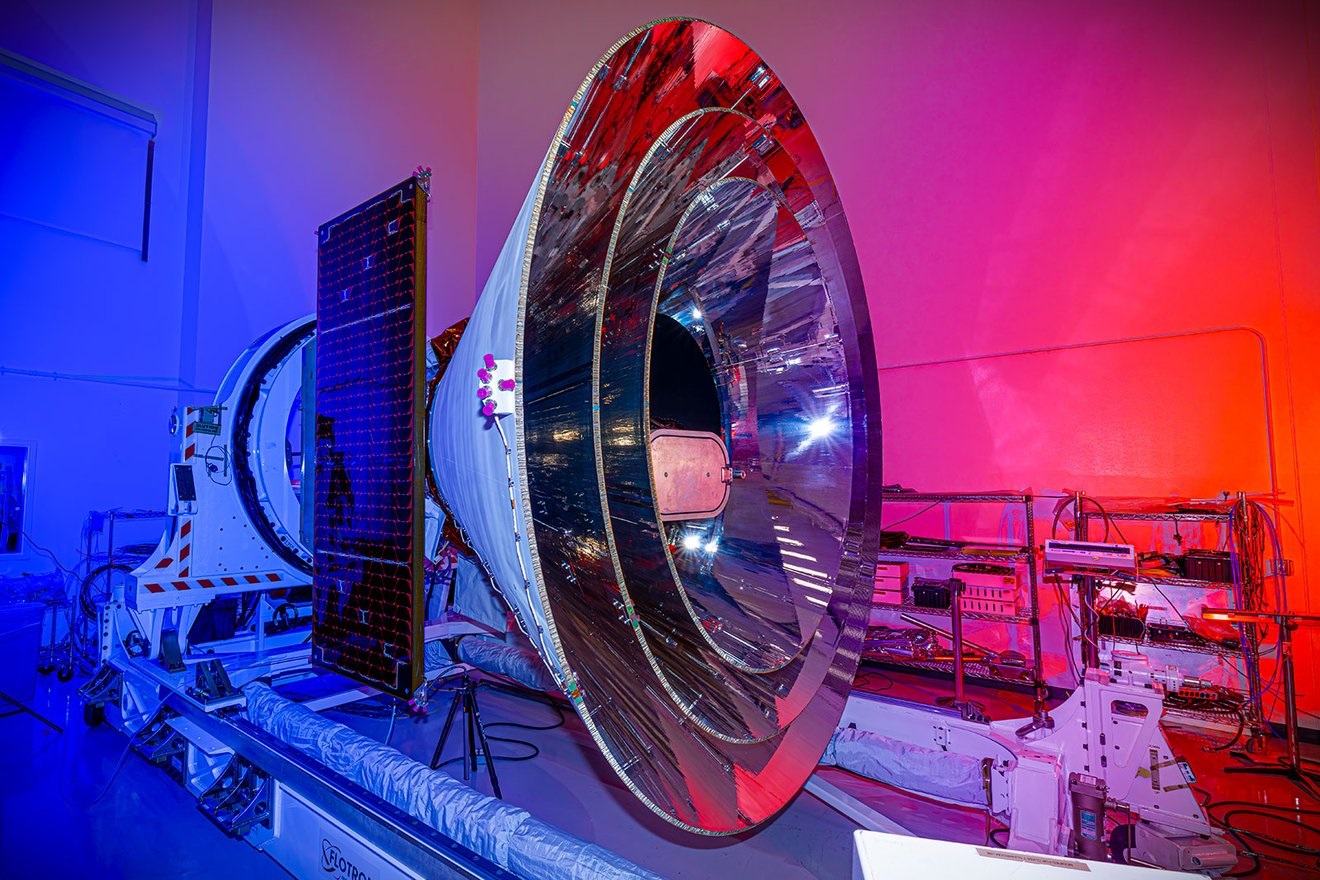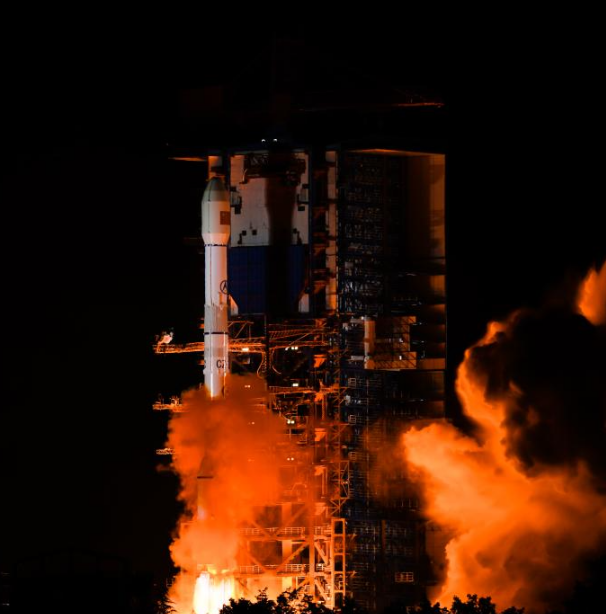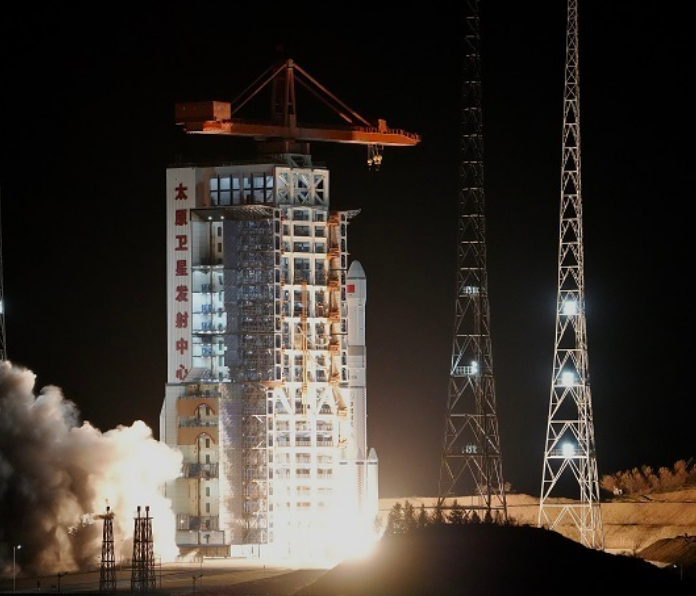13
2024-12
NASA eyes launching SPHEREx sky-mapping mission in early 2025

NASA’s SPHEREx space observatory was photographed at BAE Systems in Boulder, Colorado, in November 2024 after completing environmental testing. The spacecraft’s three concentric cones help direct heat and light away from the telescope and other components, keeping them cool. Credit: BAE Systems
The observatory will lend insight into what happened after the big bang, measure the glow of galaxies near and far, and search the Milky way for building blocks of life.
NASA and SpaceX are targeting late February 2025 for the launch of the agency’s next astrophysics observatory, SPHEREx. Short for Spectro-Photometer for the History of the Universe, Epoch of Reionization and Ices Explorer, SPHEREx will launch aboard a SpaceX Falcon 9 rocket from Vandenberg Space Force Base in California.
About the size of a subcompact car, SPHEREx will enter a polar orbit around Earth and create a map of the entire sky in 3D, taking images in every direction, like scanning the inside of a globe. The map will contain hundreds of millions of stars and galaxies, showing them in 102 colors (each a different wavelength of light).
Scientists will use SPHEREx’s all-sky map to achieve the mission’s three key science goals. The first is to shed light on a cosmic phenomenon called inflation, a brief but powerful cosmic event when space itself increased in size by a trillion-trillionfold less than a second after the big bang. The observatory will measure the distribution of hundreds of millions of galaxies to improve understanding of what drove inflation and of the physics behind this event.
The SPHEREx mission will also measure the collective glow from galaxies near and far, including light from hidden galaxies that haven’t been individually observed. This data will provide a more complete picture of all the objects and sources radiating in the universe.
Its third key science goal is to search the Milky Way galaxy for icy granules of water, carbon dioxide, and other essential building blocks of life. The mission will help scientists discover the location and abundance of these icy compounds in our galaxy, giving them a better sense of how likely they are to be incorporated into newly forming planets.
Launching as a secondary payload on the same Falcon 9 rocket as SPHEREx will be NASA’s PUNCH mission (Polarimeter to Unify the Corona and Heliosphere). Led by Southwest Research Institute’s office in Boulder, Colorado, and managed by NASA’s Goddard Space Flight Center in Greenbelt, Maryland, PUNCH is a constellation of four small satellites heading to low Earth orbit that will make global, 3D observations of the Sun’s corona to learn how the mass and energy there become solar wind.
NASA’s Launch Services Program, based at the agency’s Kennedy Space Center, manages the launch service for the SPHEREx and PUNCH missions.
-
29
2025-05

Tianwen-2 Mission Launched Successfully
At 1:31 AM today, China successfully launched the Tianwen-2 planetary exploration probe from the Xichang Satellite Launch Center using the Long March-3B Y110 carrier rocket.
-
13
2025-05

Communication Technology Experiment Satellite No. 19 Successfully Launched
At 2:09 on May 13, China successfully launched the Communication Technology Experiment Satellite No. 19 from the Xichang Satellite Launch Center using a Long March 3B carrier rocket. The satellite smoothly entered its predetermined orbit, and the launch mission was a complete success.
-
12
2025-05

Remote Sensing Satellite No. 40, Group 02, Successfully Launched
On May 11 at 21:27, China successfully launched the Remote Sensing Satellite No. 40, Group 02, from the Taiyuan Satellite Launch Center using a Long March 6A carrier rocket. The satellite entered its predetermined orbit smoothly, and the launch mission was a complete success.









